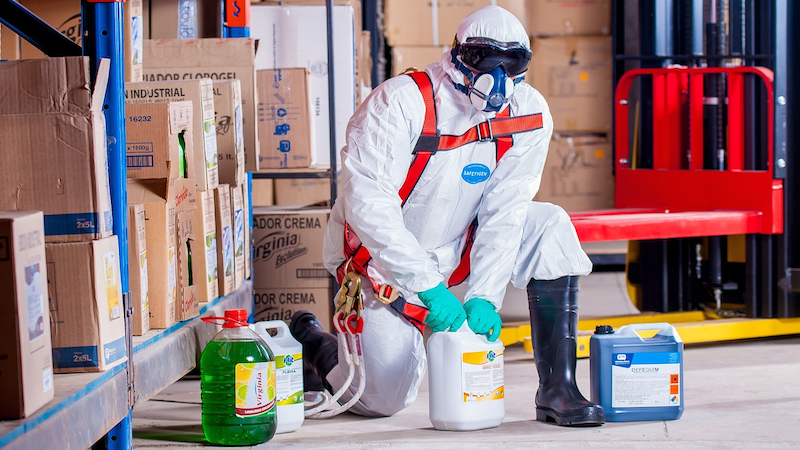
- Select a language for the TTS:
- UK English Female
- UK English Male
- US English Female
- US English Male
- Australian Female
- Australian Male
- Language selected: (auto detect) - EN
Play all audios:
The chemical industry took a page out of the tobacco playbook when they discovered and suppressed their knowledge of health harms caused by exposure to PFAS (per- and polyfluoroalkyl
substances), according to an analysis of previously secret industry documents by UC San Francisco (UCSF) researchers. A new paper published in _Annals of Global Health_, examines documents
from DuPont and 3M, the largest manufacturers of PFAS, and analyzes the tactics industry used to delay public awareness of PFAS toxicity and, in turn, delay regulations governing their use.
PFAS are widely used chemicals in clothing, household goods, and food products, and are highly resistant to breaking down, giving them the name “forever chemicals.” They are now ubiquitous
in people and the environment. “These documents reveal clear evidence that the chemical industry knew about the dangers of PFAS and failed to let the public, regulators, and even their own
employees know the risks,” said Tracey J. Woodruff, PhD, professor and director of the UCSF Program on Reproductive Health and the Environment (PRHE), a former senior scientist and policy
advisor at the Environmental Protection Agency (EPA), and senior author of the paper. This is the first time these PFAS industry documents have been analyzed by scientists using methods
designed to expose tobacco industry tactics. ADVERSE EFFECTS HAD BEEN KNOWN FOR DECADES The secret industry documents were discovered in a lawsuit filed by attorney Robert Bilott, who was
the first to successfully sue DuPont for PFAS contamination and whose story was featured in the film, “Dark Waters.” Bilott gave the documents, which span 45 years from 1961 to 2006, to
producers of the documentary, “The Devil We Know,” who donated them to the UCSF Chemical Industry Documents Library. “Having access to these documents allows us to see what the manufacturers
knew and when, but also how polluting industries keep critical public health information private,” said first author Nadia Gaber, MD, PhD, who led the research as a PRHE fellow and is now
an emergency medicine resident. “This research is important to inform policy and move us towards a precautionary rather than reactionary principle of chemical regulation.” Little was
publicly known about the toxicity of PFAS for the first 50 years of their use, the authors stated in the paper, _The Devil They Knew: Chemical Documents Analysis of Industry Influence on
PFAS Science_, despite the fact that “industry had multiple studies showing adverse health effects at least 21 years before they were reported in public findings.” The paper states that,
“DuPont had evidence of PFAS toxicity from internal animal and occupational studies that they did not publish in the scientific literature and failed to report their findings to EPA as
required under TSCA. These documents were all marked as ‘confidential,’ and in some cases, industry executives are explicit that they ‘wanted this memo destroyed.’” SUPPRESSING INFORMATION
TO PROTECT A PRODUCT The paper documents a timeline of what industry knew versus public knowledge and analyzes strategies the chemical industry used to suppress information or protect their
harmful products. Examples include: * As early as 1961, according to a company report, Teflon’s Chief of Toxicology discovered that Teflon materials had “the ability to increase the size of
the liver of rats at low doses,” and advised that the chemicals “be handled ‘with extreme care’ and that ‘contact with the skin should be strictly avoided.’” * According to a 1970 internal
memo, DuPont-funded Haskell Laboratory found C8 (one of thousands of PFAS) to be “highly toxic when inhaled and moderately toxic when ingested.” And in a 1979 private report for DuPont,
Haskell labs found that dogs who were exposed to a single dose of PFOA “died two days after ingestion.” * In 1980, DuPont and 3M learned that two of eight pregnant employees who had worked
in C8 manufacturing gave birth to children with birth defects. The company did not publish the discovery or tell employees about it, and the following year an internal memo stated, “We know
of no evidence of birth defects caused by C-8 at DuPont.” Despite these and more examples, DuPont reassured its employees in 1980 that C8, “has a lower toxicity, like table salt.” Referring
to reports of PFAS groundwater contamination near one of DuPont’s manufacturing plants, a 1991 press release claimed, “C-8 has no known toxic or ill health effects in humans at concentration
levels detected.” As media attention to PFAS contamination increased following lawsuits in 1998 and 2002, DuPont emailed the EPA asking, “We need EPA to quickly (like first thing tomorrow)
say the following: That consumer products sold under the Teflon brand are safe and to date there are no human health effects known to be caused by PFOA.” In 2004, the EPA fined DuPont for
not disclosing their findings on PFOA. The $16.45 million settlement was the largest civil penalty obtained under U.S. environmental statutes at the time. But it was still just a small
fraction of DuPont’s $1 billion annual revenues from PFOA and C8 in 2005. “As many countries pursue legal and legislative action to curb PFAS production, we hope they are aided by the
timeline of evidence presented in this paper,” said Woodruff. “This timeline reveals serious failures in the way the U.S. currently regulates harmful chemicals.”






